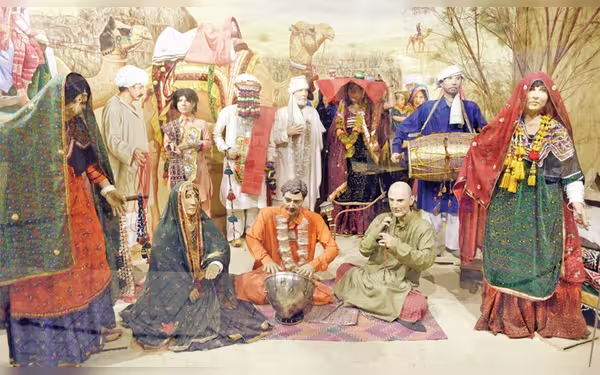Saturday, July 6, 2024 11:33 AM
Empowering SUGHARRs: Preserving Pakistan's Traditional Artistry
- SUGHARRs: Skilled women artisans preserving Pakistan's cultural heritage
- Rillis: Symbol of tradition and modern fashion in Pakistan
- Challenges: Empowering SUGHARRs for sustainable income and cultural preservation
 Image Credits: Republic Policy
Image Credits: Republic PolicyDiscover the intricate art of SUGHARRs in Pakistan, specializing in crafting traditional items like Rillis. Explore the challenges they face and the need for initiatives to empower these skilled artisans.
In the heart of Pakistan, millions of women artisans known as 'SUGHARRs' in the local Sindhi language dedicate themselves to the intricate art of crafting traditional items. These skilled artisans, particularly hailing from underprivileged areas, specialize in creating a wide array of products such as Quilts (Rillis), Caps (Topis), Shoes (Juttis), Ajrak, and more.
One of the most cherished crafts among the SUGHARRs is the making of Quilts, known as Rillis, which have become a symbol of cultural heritage and modern fashion in Pakistan and beyond. Passed down through generations, the art of crafting Rillis involves intricate handwork using simple tools like needles, threads, and scissors.
The process of creating a traditional Rilli can take anywhere from 12 to 15 days, with each piece uniquely designed with patchwork, applique, or embroidery techniques. These vibrant Rillis, adorned with colorful fabrics, mirrors, and tassels, hold significant cultural value and are often exchanged as gifts during special occasions.
Despite the popularity of these handcrafted treasures, the SUGHARRs face challenges in preserving and promoting their traditional art form. Lacking institutional support and training opportunities, these skilled women struggle to turn their craft into a sustainable source of income.
As we celebrate the rich heritage of the SUGHARRs and their exquisite Rillis, it is essential to recognize the need for initiatives that empower these artisans, preserve their cultural legacy, and provide them with the resources to thrive in the modern market.













